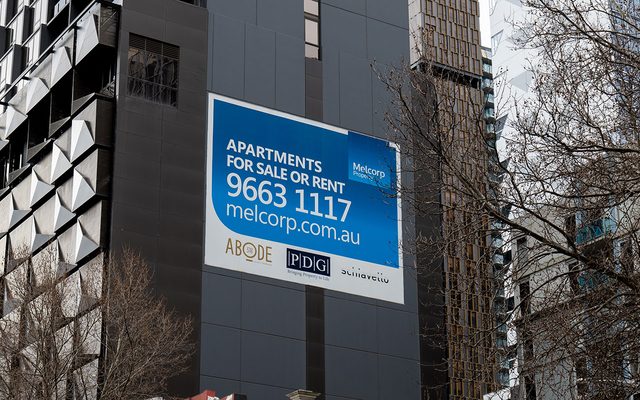This article is from the Australian Property Journal archive
APARTMENT sales rates continued to fall in 2018, ending the year at a new low of 7.7% as a proportion of available stock in the December quarter.
The latest Urbis Apartment Essentials report showed Sydney’s surveyed sold stock averaged 21% of available supply throughout each quarter in 2017 before dropping to just 5.5% last year.
Melbourne and the Gold Coast followed with sales dropping by around 4% over the same period. Brisbane and Perth, the markets that saw the least new stock enter, experienced slight increases over the year.
Clinton Ostwald, director at Urbis, commented there have been fluctuating results around the country.
“In many markets, buyers are soaking up the existing completed stock as the brakes have been put on new launches. In other markets, new projects are still being launched to market, replenishing the supply and leading to steady sales.
“We need to keep an eye on supply levels as ongoing population growth, particularly on the east coast, will quickly take up available supply. This may result in a housing supply shortage in the next 12 to 18 months as we are also seeing fewer completions in the greenfield house and land market.”
One quarter of actively selling apartments are in presales, while 49% are under construction and 26% are recently built.
Sydney and the Gold Coast both saw 6% of available stock sold in the quarter, with 977 new apartments and new 377 apartments launched respectively. Melbourne, Brisbane, and Perth all saw 9% sold from 2,781 new apartments, 0 and 464 respectively.
In Brisbane, developers are putting projects on the backburner or considering offloading projects while they wait for finance. This week Singapore-backed developer Land & Homes Group said in a statement that it has not secured funding for the redevelopment of two projects:
– 100 Barry Parade, Fortitude Valley site which has development approval for a two-tower development totalling 492 apartments;
– 207 Wharf Street, Spring Hill site where the company is actively seeking new tenants and is also exploring a possible sale or alternative redevelopment.
“The company believes that there is a reasonable likelihood that it will be successful in obtaining suitable project funding in the medium term assuming that the market for quality residential apartments in Brisbane improves within that timeframe,” Land & Homes Group said.
Meanwhile Urbis found apartment approvals are at their lowest in the history of the Apartment Essentials report, at 4,576 in the quarter.
“With new design specifications and planning requirements in some jurisdictions, we’re likely to see this number continue to fall in 2019,” Ostwald said.
Sydney is the only city with one-bedroom and one-bathroom apartments as the lead product type, accounting for 48% of sales in the quarter. Two-bedroom, two-bathroom apartments made up 66% of sales on the Gold Coast, 53% in Brisbane, 44% in Melbourne and 41% in Perth.
Lower levels of new stock replenished the slow sales throughout 2018, with 24,000 new apartments launching throughout the year. Melbourne saw 11,244 new apartments entering the market in 2018, well ahead of second-placed Sydney with 4,810.
The first half of 2019 is expected to bring 1,000 new apartment launches in Brisbane.
Australian Property Journal




